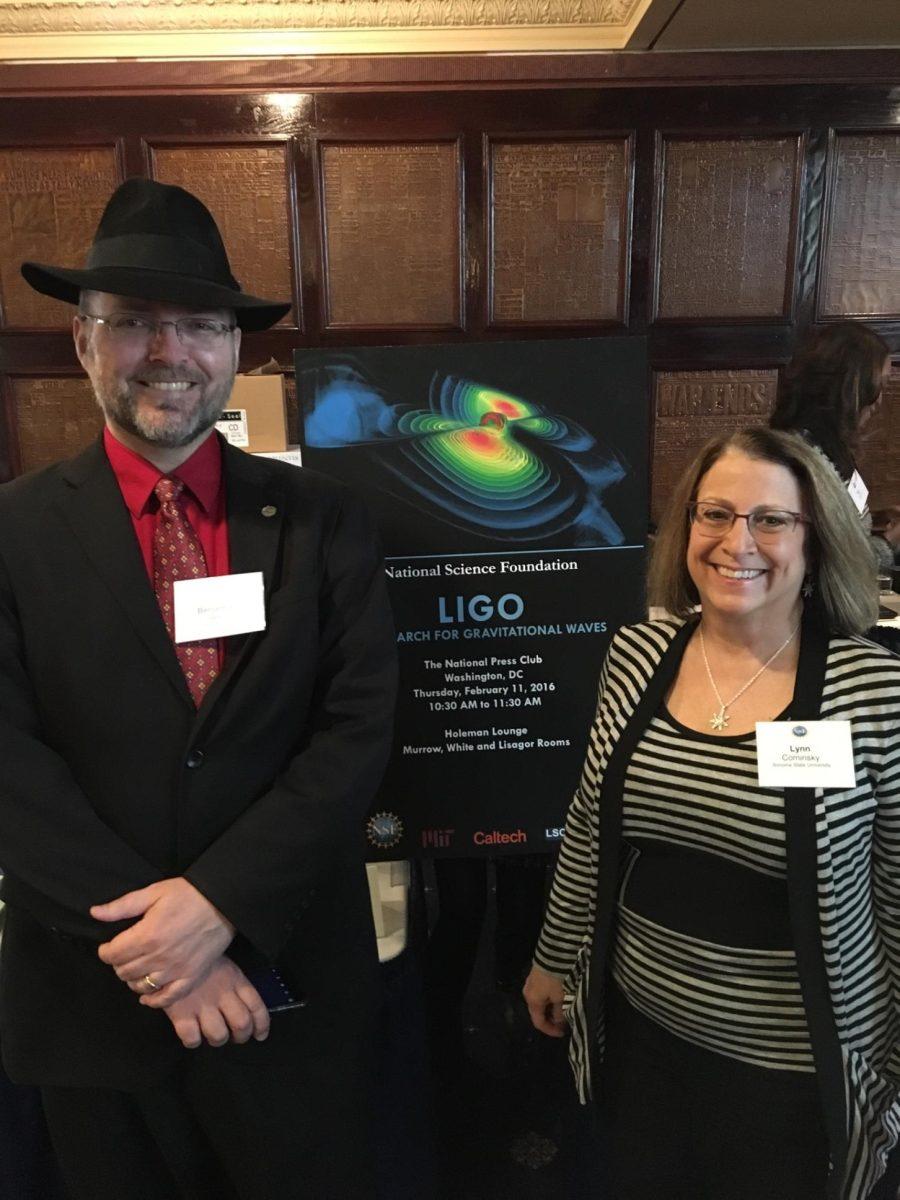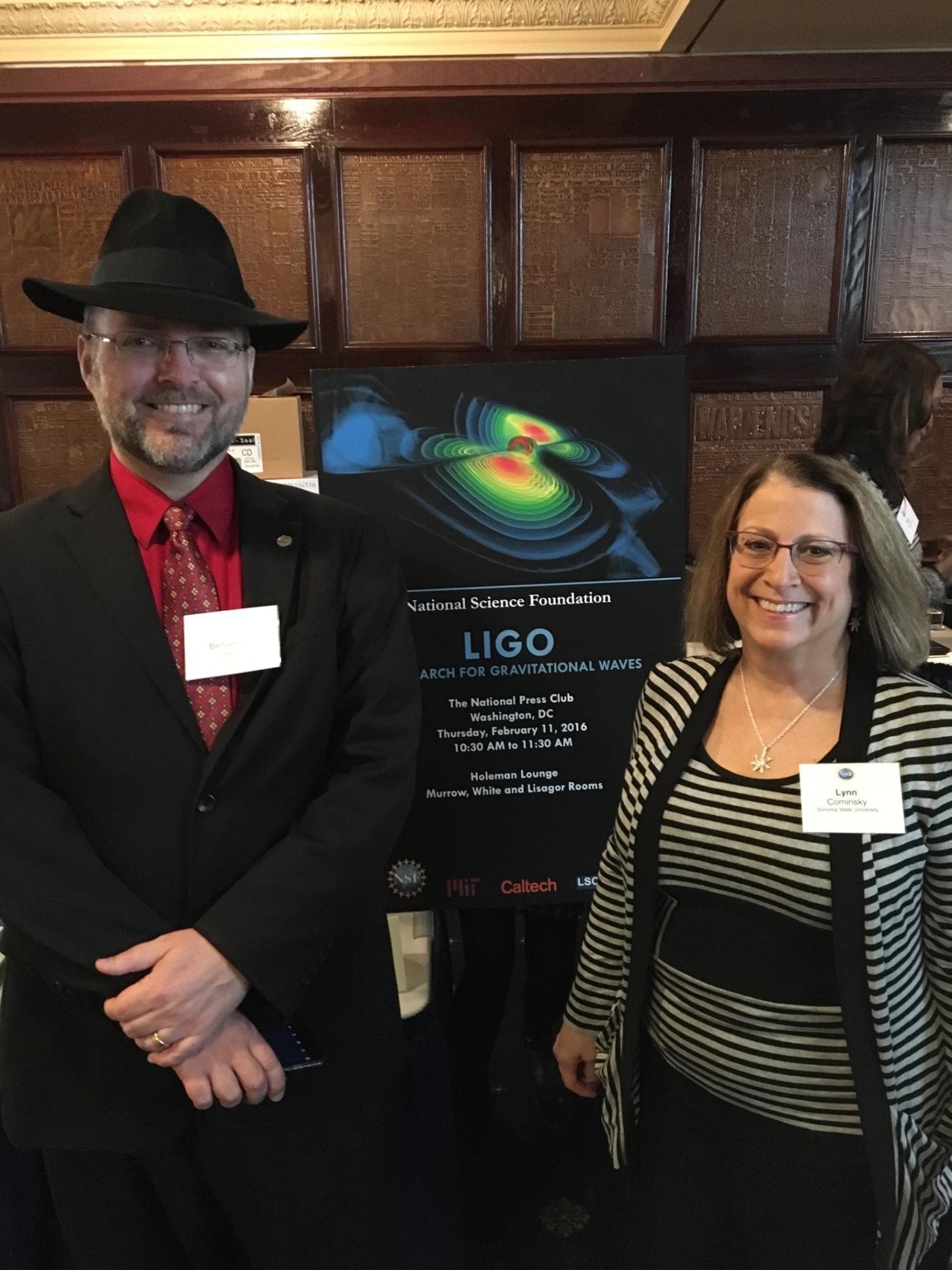One hundred years ago, Albert Einstein developed what he called the theory of general relativity, the idea that massive objects cause a distortion in space-time which is felt as gravity.
For a century, countless scientists have dedicated their lives to finding these distortions, and for the first time, ripples in the fabric of space-time have been observed.
These ripples are known as gravitational waves and have presented the science community with a whole new avenue to explore in explaining the world around us.
Lynn Cominsky, chair of the physics and astronomy department at Sonoma State University, was on the team of 1,000 authors who published this discovery in the journal Physical Review Letters on Feb. 12. Cominsky joined the LIGO team in 2007 where she served as part of the Program Advisory Committee until 2010. Currently, she is the chair of the Formal Education Working Group which works to create educational materials for K-12 and college students.
The discovery came about in the early morning hours of Sep. 14, 2015 and was detected by both of the Laser Interferometer Gravitational-wave Observatory (LIGO). Physicists have confirmed this was the first gravitational wave signal from a merger of two black holes previously not known to be possible.
“It was the first gravitational wave signal, it was the first time anyone has ever seen merging black holes and it was the first time that anybody even knew that black holes would be in a binary system so they could merge.” said Cominsky.
According to David Reitze, executive director of LIGO, one of the black holes had the mass of 29 suns while the other had a mass of 36 suns, each believed to be approximately 30 miles in diameter. Another aspect of this occurrence was that these black holes didn’t collide in the last 100 years; these objects barreled into each other more than a billion years ago moving at half the speed of light. To measure a gravitational wave is extremely challenging because it’s something we cannot replicate here on Earth. According to Cominsky, the signal that was detected is like measuring a change in length that is 1/10,000 the size of an atom over the baseline of four kilometers.
“I think that it is an amazing discovery that opens up a different way of measuring things in the universe,” said Weston Henry, sophomore physics major at Sonoma State University, “It is crazy how, even after all of this time, Einstein’s theory is true.”
In other words, it’s like trying to measure the width of a hair with an instrument that is as big as the distance between here [Earth] and the next star – which is four light years away.
Cominsky wasn’t the only representative of Sonoma State University on the LIGO team; two alums, Benjamin Owen and Ryan Quitzow-James, from Noma Nation were also authors on the work.
Having Sonoma State graduates featured in this groundbreaking discovery can have some positive implications for the university, in particular the physics and astronomy department.
“I think people will be excited that we are part of it,” said Cominsky, “For example, there is nobody from UC Berkeley that is part of LIGO.”
Although Sonoma State is a smaller state school, the physics department has a good reputation for doing what Cominsky calls ‘real physics’, relating to astronomy and material science.
Cominsky believes being part of this breakthrough will bring more students looking to jump into astronomy; this will merely be an added bonus on top of the strides the astronomy department has made, such as having NASA satelites and the on-campus observatory that will undergo some upgrades in the near future.
“Astronomy is definitely going to be getting stronger here,” said Cominsky, “We also will be having a new degree concentration, which will be a b.s. in physics with a concentration in astrophysics that we are trying to do all the paperwork for that will hopefully start next year.”
With this discovery still fresh off the press, the future for research seems boundless; it’s the hope of physicists all over the world to use similar technology to see neutron star mergers and get a better grasp on what takes place when a star blows up.
“It is beyond exciting for someone like myself who has been intrigued by how our universe works,” said Jorge Bautista, sophomore computer science and physics double major, “With the measurement of gravitational waves, we can now find new methods of discovering how our universe works.”





![[Both photos courtesy of sonoma.edu]
Ming-Ting Mike Lee stepped in as the new SSU president following Sakakis resignation in July 2022](https://sonomastatestar.com/wp-content/uploads/2024/04/CC4520AB-22A7-41B2-9F6F-2A2D5F76A28C-1200x1200.jpeg)



























